
Oh, Watch Dogs. You elusive hound, you. You’ve teased me since 2012 with that deliciously hopeful E3 trailer, so rife with relevance and cultural understanding. Over time, you gestated in my mind as the game that couldn’t be messed up, the game that needed only to look around to find new things to take advantage of. You were a game of the now, a game that understood our reliance on what we not only took for granted, but what we implicitly (after ignoring a couple privacy agreements here and there) trusted and accepted: Infrastructure. Everything was connected and hacking was your weapon. Yup, you hit the firewall of my heart with a DDoS attack of potential.
… And then, in some deranged stupor, you thought, “Mmmm. Needs more dog.” Where I expected to be a lone hacker caught up in the war of information and surveillance, I was stuck as a one-man army with a couple gimmicks up his sleeve. You turned Chicago into a playground of secrets but never capitalised on it, and instead, chose to ride on the framework of other sandbox games to pull you through. There are certainly moments to be had with you where you broke away from what had been done before, but what you presented me with simply didn’t utilise your defining strength; that brilliant spark of intelligent exploitation, lost to the obvious and brutish methods offered by so many other games before you. You let slip the dogs of war. Now I have a bone to pick.
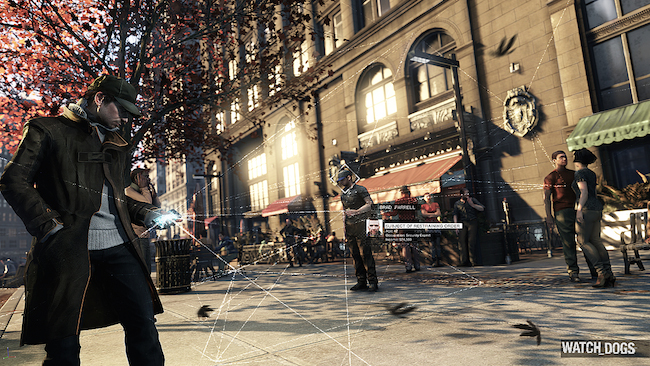
The basic premise of the whole game is that the city of Chicago operates under one operating system, rather ingeniously titled ctOS; regulating traffic lights, security cameras, and basically everything electronic. You play as Aiden Pearce, a grey-hat hacker seeking revenge after an assassination attempt on him led to the death of his 6-year old niece. Aiden’s primary weapon (supposedly) is his smartphone, capable of finding exploitable vulnerabilities in ctOS and utilising the system for his own purpose. While it’s certainly ridiculous to have one system linked to literally every single electronic device in the city, it’s not the worst set up I’ve ever heard. It’s a stretch, but it’s half-believable and gets the job done, which is more than can be said about the rest of the story.
Aiden is renowned throughout Chicago as ‘The Rat’ or ‘The Vigilante’, gaining fame from using his ctOS access to track criminals and stopping crimes all over the city. While he’s famous, he’s not Batman levels of renowned, which I actually really liked. What I didn’t like was that as the story progresses, Aiden stops being a vigilante and turns into a Spartan. He can access every weapon he’s encountered whenever he wants, craft lures, IED’s and city-wide blackouts on the fly, and practically loses the need for his smartphone altogether, albeit when a very rare and contextual circumstance should arise. This inconsistency really comes through when Aiden begins questioning his murderous tendencies, which seem to fall by the waist side about ten minutes later when he’s killing an entire mafia with explosive traps while ‘Jesus Built My Hotrod’ plays in the background. Hacking is your weapon, dammit! It’s like someone thought Far Cry 3 was really cool, so they decided to do it again without Vaas.
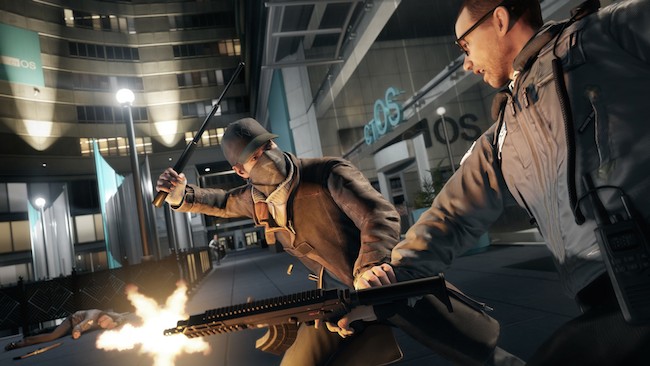
The characters themselves are pretty indicative of the story as a whole, relying more on reference than crafting a well-structured and enticing narrative. Jordi Chin is the Yakuza inspired weapons guy, T-Bone is the old-school tinkerer, Damien is the scorned rival, and Clara is the most blatantly obvious reference to that chick with the dragon tattoo humanly imaginable. I can deal with references just fine. In fact, I actually quite liked them as references, but that’s all these characters are; stereotypes of the generic hacker group that don’t have any back story of their own. I wanted to see Jordi explored more after his hilarious pizza guy stunt, but nothing ever came, and the same was true for everyone else. There was an establishment of how they fit in and that was it. For a game about uncovering people’s secrets, it does a pretty poor job with the ones you want to know more about.
Note: If you don’t like spoilers, move on to “design” because here’s where I need to delve into the plot.
Lets start with the obnoxiousness of it all. With a tagline like ‘everything is connected’, it’s no shock that the story was going to be a conspiratorial exploration into the dark and powerful underbelly of Chicago. Unfortunately, that apparently means it’ll be a difficult to follow dredge through a multitude of uncomfortable realities that are never explored deeper than the mention of their existence. I’m following a guy who works at a company that wasn’t mentioned until this very moment to gain access to a place that I’ve never heard of to do something to get to somewhere else that hasn’t been made entirely clear yet. Gotcha. It’s often a mess to decrypt what’s going on at any given moment, yet everything that happens is more predictable than reddit’s reaction to an amputee kitten.
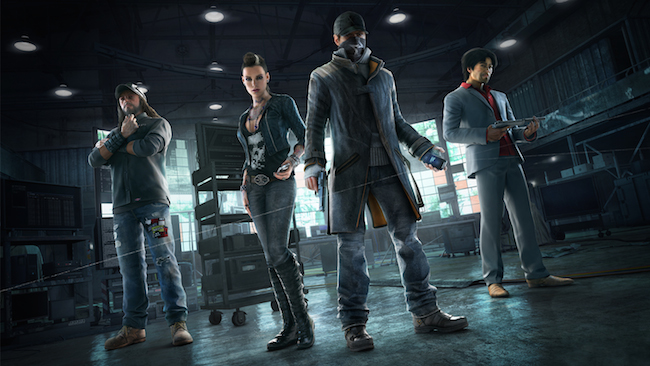
The way the story presents itself attempts to build up intrigue and tension, but instead serves to inform you too much about what’s coming. Before Clara died, Aiden receives an ominous phone call from her, to which I immediately knew that she would die at Lena’s grave because it would be symbolic of fatalism. Of course, T-Bone was gonna come back, he was the guy we won over after blowing up everything he owned and aligned with through perseverance because he has a good moral centre. Duh, Quinn’s the head of all crime and got mentioned really early on. I wonder who put the hit out on Aiden then?! The stereotypes eventually pull off their self-fulfilling tropes before stepping aside to let the next one pull off theirs, but then where does this leave Aiden?
My biggest gripe with the whole narrative is where Aiden stands on murder. He repeatedly questions himself and is questioned by his own sister about whether he defines himself as a murderer, but admits to finding satisfaction upon watching Quinn die. Cool, he’s faced with the moral dilemma of finding reluctant satisfaction through killing but doesn’t wish to actively inflict it. Until he does again with the next guy that needs to die, whether that’s Iraq, Quinn, or Damien. Does that mean he’s cool with killing? Well, that’s up to you to decide when you choose to shoot Maurice or not. Okay, bit late though, considering we’ve already murdered half of Chicago at this point, and that decision feels like it’s been thrown in there for the hell of it, with no consequences and no bearing on anything a la Far Cry 3. It’s there, but it doesn’t feel legitimate. With that said, it does mean that you ultimately get the final say on Aiden’s viewpoint, but what else could have been done apart from murdering the loose cannons? Well, wasn’t this game meant to be all about uncovering lots of dirty secrets, possibly to use against other people?

As promised by Ubisoft, there’s a lot to do in Chicago. Aside from the main story missions, there are side quests to investigate like crime prevention, chess, AR games, various collectibles, and my personal favourite, digital trips. On top of that, multi-player is seamlessly integrated into the overall experience, with player invasions popping up without being invasive to the experience (but we’ll get to that later). The problem with all this stuff is that half of the games feel way too reminiscent of Far Cry 3 or GTA. Digital trips are effin’ awesome, so why the hell would I want to waste my time playing poker when I could be a spider tank? Cash run is a great little free running AR game, but then you’ve got some mundane drinking contest mini-game shoved in as well. For as much nifty creativity that’s plopped in there, there’s often another generic and uninspired time-waster thrown in alongside it.
It’s quite important to emphasise that the city of Chicago is a big place, but it legitimately feels like everything is connected and at your fingertips to exploit. Wherever you go, security cameras are watching from all angles, traffic lights and blockers are placed for you to mess with, and it is here that Watch Dogs comes into i’s own. Combat is flipped on its head when you can use the environment around you to do your dirty work, and successfully escaping the police is made a lot more interesting than the old ‘get out of line of sight’ game. When the emphasis was on using technology to solve the problem, I got the most enjoyment from the game. Sadly, this wasn’t the case nearly enough and I more so felt like I was playing Saints Row 2.5 than something really unique.
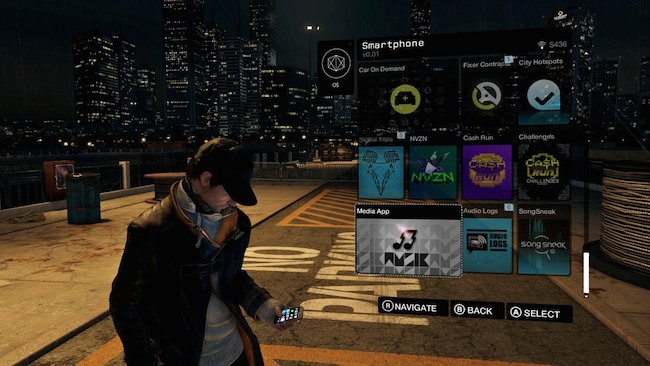
The thing about Watch Dogs is, I feel like I’ve done all of this before. Grand Theft Auto gave me something realistic, Saints Row gave me some super powers, and Farcry 3 gave me everything on the side. There’s very little innovation going on, nothing that builds on the brilliant idea of technological exploitation that the game presents. Everything has been distilled, pulled back to what’s already been done and rarely breaking loose against the norm. Aiden has to be a tough guy, there needs to be explosions, it can’t be a game without GUNS! There’s nothing that really makes it stand out as its own game. It’s more like a conglomeration of previous endeavours with a new look, and because of that, it sadly holds itself back; suffering both in tone and in mechanical nuance.
As I mentioned earlier, Aiden is known around the city as ‘The Vigilante’, not ‘The One Many Army.’ For some ridiculous reason, Aiden carries all weapons with him at all times, and is capable of crafting all of his one-time items (and/or hacks) on the go. While I understood the items part, I doubt Aiden could hold 8 pistols, 5 assault rifles, 3 shotguns, 2 sniper rifles, and a grenade launcher; along with about 600 bullets of varying design, in that damn fine coat of his. Hacking is your weapon; it says so right on the back of the box! There could be so many other avenues to go down but everything leads to ‘be a gun-toting badass’. I understand giving the player control, but far out. I thought Aiden was going to be more of an every-man rather than a military supply crate with legs.
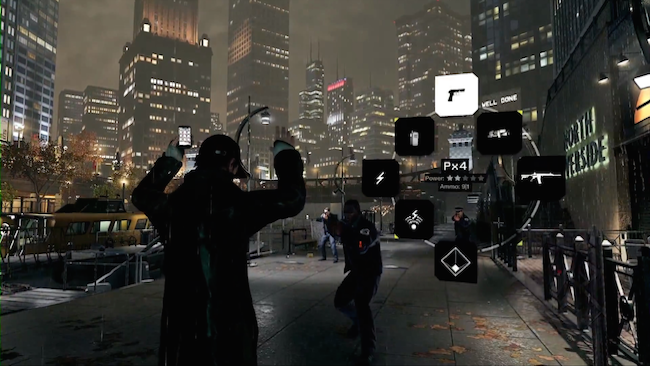
As a way to represent Aiden’s renown in-game, a binary reputation system is used based on whether you prevent or commit crimes. Now, aside from the glaring issue that this rating only drops when civilians are harmed or killed, I felt like it was far too easy to max out my rating. After about five or so prevented crimes, I was more than halfway to being a full-fledged Vigilante rating, and that didn’t change if I occationally took the time to blow up a couple mobsters here and there. Even when I accidentally killed a few civilians, I was still practically perceived as Ghandi to the general populace. It just seemed like a superfluous addition to max out and reap whatever ill-explained benefits flowed with it. Thankfully, however, the in-game general populace wasn’t all that I dealt with.
A huge part of Watch Dogs is the multi-player, which is integrated similarly to the crime prevention events. There are a whole heap of multi-player modes on offer, ranging from a moving king of the hill format, where the hill is a file of some sort that needs time to be decrypted, to a cat and mouse game where one person hides from the other as they hack them. They’re basically old-school formats with a modern twist, which I greatly appreciated. There are a couple ways to join a session, none of which are intrusive at all. The easiest way is to be profiled when you’re outside of missions; you just hold down a button, and then bam, you’re in… Well, that’s the intended result.
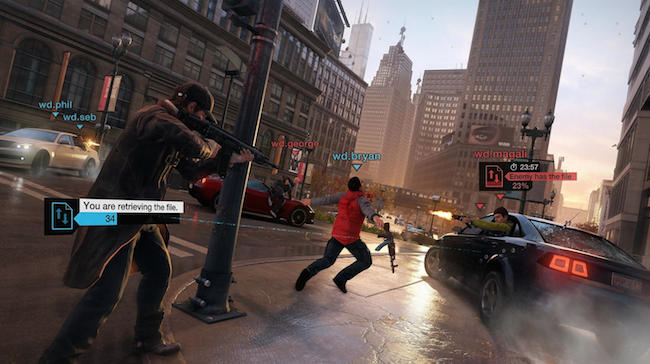
The multi-player has two mediums it covers: The main game and the mobile companion app. Straight up, the mobile app doesn’t work. The idea is that you create a challenge/’contract’ for someone in the main game to try and complete while dispensing police cars and other obstacles to hinder them. If they beat the challenge, they win, otherwise you win. I sat for an hour (literally) as the app tried to find another player for me to challenge before I gave up and cancelled it. It’s a cool concept but terribly executed. The main game deals a lot better, flinging you into a small region of Chicago with a bunch of other players after a short wait; albeit with lag issues.
Watch Dogs feels, controls wise, smack bang between GTA and Saints Row. Everything has weight, but it still feels “arcadey”, which is typical for a sandbox game. I played the game on a PC, and while it wasn’t nearly as good as it would have been on a controller (shock horror), it wasn’t a half-assed attempt to port it over either. I managed to get through without too many hitches, but the smartphone and handling of cars was obviously made with a controller in mind. Apart from that, everything was pretty well laid out and didn’t hinder me in my sneaky ways.
In my opinion, stealth is the greatest thing ever, so when the game didn’t force me into combat, I really enjoyed jumping from cover to cover with the press of a button and taking down enemies without them ever knowing. It was a great system, hindered only by the physics engine knocking something into where I wanted to hide and disabling my idea. This actually happened really often, usually a rogue garbage bag or trash can being kicked by Aiden on his way to the new hiding spot only to be refused because, lo and behold, the almighty rogue drawer was occupying that space now. This inevitably led to me being spotted and provoking yet another damn shootout.

The combat in Watch Dogs is fluid and gratifying, perhaps even to a fault. Like I’ve said, Aiden isn’t supposed to be a soldier, but the superb handling of his firearms would certainly have me believing otherwise. Ignoring that observation, though, the game acts as a pretty decent cover-based shooter. The fluid jumping from cover to cover becomes invaluable in a fire fight, and hacking certainly adds another dimension to the normal gun play, but with that being said, the gun mechanics just feel too simple to make it a core focus of the game. Unfortuately, as the missions progress, it’s the exact path that the game takes. However, this also meant more police chases.
Police chases are fun. Very fun. It’s less about outrunning as it is about outwitting. Okay, it’s not quite that sophisticated, but it’s definitely better than just running away. Once you find a nice little hiding spot, it can actually be quite tense watching the cops drive past your back alley, especially if the helicopter doesn’t pull something dumb. That said, the AI is always a bit dumb in any sandbox game, and this is no exception. There are limitations to the game, and going into a building, shutting the door, and silently waiting is one of them. It might seem a bit cheaty, but finding a hiding place is trickier than it sounds, especially after a well-timed hack of the traffic lights.
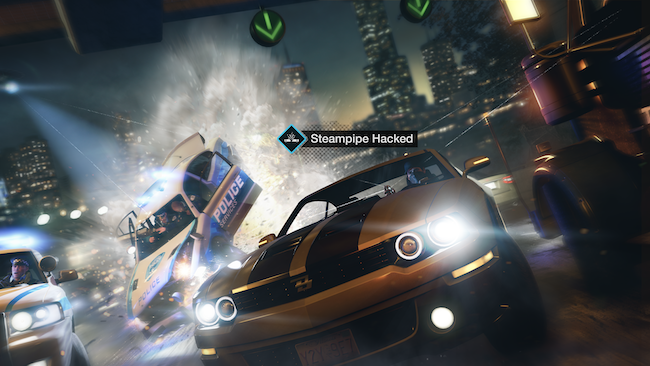
The art of hacking was more passive than I expected, much to my delight. Instead of entering some specialised hacking mode, you simply look at what you wish to exploit, be it a camera or a grenade, and hold a button down to trigger the action. This method works great unless things get a bit cramped. Say you have three things in close vicinity to one another: a man with a grenade, a water pipe, and a laptop with a camera. If I want to hack the camera, the game might be less than helpful selecting the the target. Similarly, ctOS cues will emerge under certain circumstances, like causing a car crash at traffic lights. If you’re intending on hacking a door to open in front of you, you can’t until the cue goes away, at which point it might be too late to open the door and shut it before the cops get you. For the most part, it works and it’s satisfying, but occasionally, the system will still slip up.
Where it becomes unbearable is in multi-player. Instead of being thrust into a frantic region to face off against one another, you’re thrown into a strangely buggy area that feels unresponsive. Lag is a massive issue in of itself but it’s compounded when every player is trying to use the environment to their advantage. You raise blockers only to have them pop up too late, you get a prompt for a ctOS take down but it instantly vanishes because the players’ behaviour is too erratic to predict; it’s just lousy compared to the single player experience. Then again, if you’re just fine with ignoring what makes Watch Dogs unique and shooting each other up, you’ll be perfectly fine.
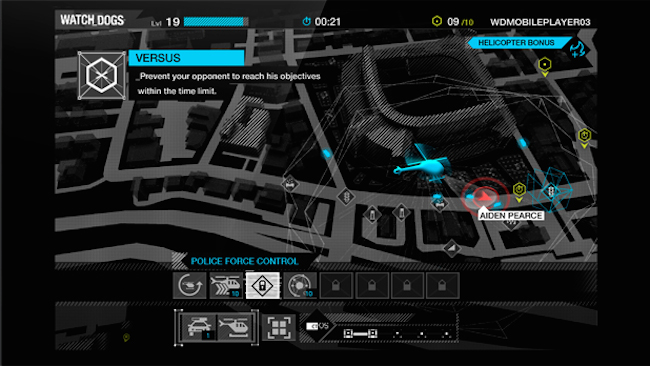
Talking about the mobile companion app again, I did play against a few people using the app (when they didn’t disconnect before they could join) and it was hellish for them. The ctOS hazards reacted too late for me to have to worry, police cars were dispatched in areas I’d long passed through, and I didn’t have any trouble blitzing each contract. To say the main game had the upper hand would be like saying ‘Heartbleed’ was a bit of an oversight.
Watch Dogs is undeniably easy on the eyes, apart from the very few parts where it glaringly isn’t. The car models are nice, the buildings mimic reality, and the detail on Aiden’s coat is delicious. It’s only when you see the awful one-reflection-fits-all mirror texture that you are reminded that this is an imaginary world. Because the game is so big, it’s hardly a surprise that reflective surfaces would be fit with a reusable texture, but when you see building being reflected from a mirror in a closed alleyway, you have to question your understanding of basic particle physics. While there’s the occasional visual bug, they’re few and far between, and overall, the game looks great.
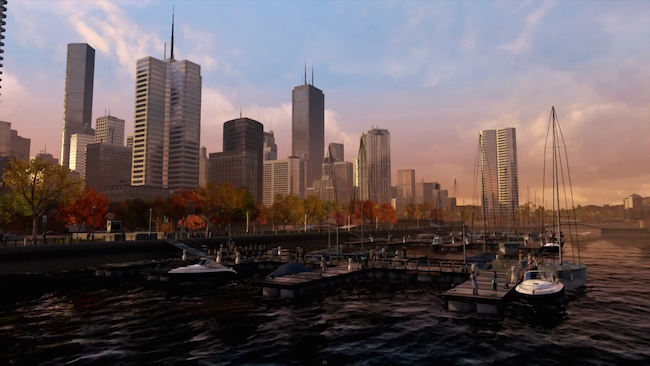
It’s worth mentioning that all the plot-relevant characters are modelled really well. Clara’s face is magnificent, Jordi looks frakkin’ excellent all round, and again, Aiden’s coat looks delicious. Strangely enough, despite them all being about as one-dimensional as a barcode, their voice-acting is actually pretty okay; need I point you in the direction of Jordi’s pizza guy stunt again? Yes, the characters are basically stereotypes void of any definition beyond their source counter-part, but I can still appreciate their addition as a tribute to some relevant cultural capital. A game like this without a Millenium Trilogy reference would be a crime, T-Bone’s a lovely homage to the tech-heads of yesteryear, and Aiden’s nephew is wearing a Bladerunner reference for a shirt. There’s even memes scattered about the city, Dedsec is a glorified Anon, and Defalt is a hilarious rendition of Deadmau5. It’s clear that the team designing the game were intimate with the tech-culture that inspired it, except for when it came to the music.
The overall soundtrack of the game is handled kind of strangely. On one hand, the score that was composed for the game itself matches the look and feel of Watch Dogs, but the stuff on Aiden’s phone that plays in the car is just ghastly. There are probably five tolerable songs on there, but that’s a matter of personal preference more than of quality audio. More songs can be unlocked through hacking people listening to music, which was a nice little comment on the state of the music industry, but I didn’t feel like a lot of effort was put into picking what songs made the cut. I would have liked to have seen a bit of Defalt in there, but that might be a bit much to ask.
 Solid sandbox game
Solid sandbox game Hacking is quick and easy to pull off
Hacking is quick and easy to pull off Where it innovates, it soars
Where it innovates, it soars Multi-player is integrated seamlessly
Multi-player is integrated seamlessly References everywhere!
References everywhere!
 Underused concepts and squandered premise
Underused concepts and squandered premise Obnoxious and morally dubious plot
Obnoxious and morally dubious plot Too much focus on brawn over brains
Too much focus on brawn over brains Lag in multi-player is game-breaking
Lag in multi-player is game-breaking Feels way too familiar to other games
Feels way too familiar to other games
I genuinely had a lot of fun with Watch Dogs when it finally decided to break away from the norm, but it just feels too similar to other efforts and doesn’t take advantage of its brilliant IP. Instead of focusing on it’s core idea of hacking as a weapon, it flounders about with gunning down enemies and going for the tried-and-true. In the end, it comes across as a well designed but uninspired game that squanders the brilliant spark of intellect that got everyone so pumped for it in the first place. I guess it really goes to show you can’t teach a watch dog new tricks.











